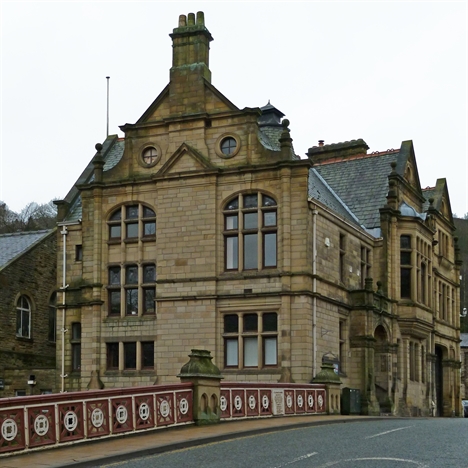13.10.15
Turning the risk of asset sell-offs into an opportunity
Source: PSE - Oct/Nov 2015
 Tony Armstrong, chief executive of Locality, the national network of community-led organisations, looks ahead to the Spending Review and what it could mean for local authorities and Locality’s member organisations.
Tony Armstrong, chief executive of Locality, the national network of community-led organisations, looks ahead to the Spending Review and what it could mean for local authorities and Locality’s member organisations.
The forthcoming Spending Review will be one of the key moments of this Parliament and will set the tone and the direction for much of the current government’s agenda until 2020. We’re expecting big cuts in public expenditure and the axe is particularly likely to fall, once again, on local authorities.
As public sector cuts continue, there is a real danger that local authorities and other public sector agencies will look to their asset bases as a quick fix to mitigate their effects. It is estimated that local authorities currently have an asset base of £250bn, but over the next few years there is a huge risk that many assets (which could be owned and managed very effectively by community organisations) will be sold off to developers.
But it is possible to turn this risk into an opportunity and we could see a transformation in the scale of community ownership of assets if the government uses the Spending Review to make it a reality.
That’s why Locality, along with other national organisations, has written to the prime minister to ask him to make sure that the value of local communities is given priority in the Spending Review. Our letter highlights the need to support a step change in the level of community ownership and management of assets.
A strong tradition of developing assets
Community ownership of assets is one of the building blocks that supports anchor organisations, like Locality’s members, with many able to survive independently because of income generated from them.
Our members have a strong tradition of developing assets and own a combined asset base of £650m, an incredible source of independent financial strength, which they use to leverage more income for their local areas to benefit their communities.
Our members’ own assets range from community centres, sports and arts facilities, to shops, cafes, housing, green space, health centres, wind turbines, community transport and even a chocolate factory and a mortuary.
Since 1971 the Westway Development Trust has managed and developed land left derelict when the A40 Westway elevated motorway was built through west London. It delivers a huge range of projects and initiatives to the local community, using assets including a riding stables, shops, offices and workspaces, industrial units and a climbing wall.

Above: Locality member the Westway Development Trust created an artificial beach under the west London flyover this summer. The image at the top of the page shows England under-21s manager Gareth Southgate hosting a coaching session for young people from disadvantaged areas of London at the Westway Sports Centre, a community asset.
‘Invest to save’ is still the right message
Although the mood music of the Spending Review is ‘there is no money’, we all know this is a simplistic and lazy message from government. If the Treasury is genuinely interested in a more efficient use of public expenditure, there is a clear ‘invest to save’ driver in providing funding to enable community organisations to become stronger and more sustainable.
We know that accessing grant funding is a major gap for community organisations, particularly to support early stage development work and capital grant funding. Social investment finance and commercial loans have their place, but the reality is that funding support is required up front to make community ownership of assets work and become self-sustaining.
Some local authorities have taken a forward-thinking and positive view of working with local community groups to transfer assets. However, many local authorities take too narrow an approach to assets disposal, viewing their assets only in terms of an immediate cash return and not considering the social value and the additional savings and economic benefits they can realise from transferring assets to community ownership.
Common ownership of assets
Some argue that local authorities have a moral obligation to consider keeping assets in common ownership before seeking to sell them commercially, and the Community Right to Bid introduced in the Localism Act 2011 provides some degree of protection for assets registered as of community value. Local authorities need to understand the wider economic and social benefits of community ownership of assets. In addition, the bad habit persists in some councils of considering community ownership only for a dubious catalogue of liabilities; dilapidated or poorly built buildings which have been unloved and have little commercial value.
Hebden Bridge Town Hall is one of a handful of community-owned town halls in the UK and a great example of a local authority taking a proactive lead in working towards community ownership. It was transferred to Hebden Bridge Community Organisation on a 125-year lease from Calderdale Council in 2008 in a deal which has seen a woefully underused building, which was falling into disrepair, transformed into a state-of-the-art centre for community and creative enterprise.

The building is now back at the centre of the town’s civic life and shows just what a community can do when it pulls together.
Asset ownership is a key part in establishing a sustainable foundation for anchor organisations, used to bring in income and offer security on an organisation’s balance sheet, but also to play an important part in establishing an organisation’s local power and influence. Although it can be tough to get assets into community hands, in the long run it enables communities to develop independent sources of income and provide services without being dependent on state grant funding. Community organisations that have developed an asset base have been able to weather changes in funding patterns more easily, and be more responsive to providing support and services to local people.
Funding to support what is often a gruelling process
Our experience over the years of working with members is that taking on assets – whether through an asset transfer process for minimal cost or raising the funds to purchase assets – takes years and is a complicated and gruelling process. Community organisations and public sector bodies need support to go through the process, with access to technical and professional advice and development and learning opportunities, to see them through intact. The Spending Review is an ideal opportunity to ensure that there is funding to support this work, so that more assets can be successfully developed for the benefit of local communities.
There is a narrow opportunity for action to secure more community ownership of assets as local authorities eye the potential for commercial gain from their asset base and central government embarks on a similar exercise. Shifting ownership of assets from government to communities is a way of building a stronger civil society, with more self-confident, independent and powerful community organisations in local areas. We’ve seen how asset ownership can make a massive difference to local communities, and we want to make sure this model is celebrated and supported.